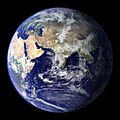The fishing industry in England comprises a significant proportion of the UK's fishing industry. [1] [2] England retains a large but reduced fishing industry. Its fleets bring home fish of every kind, ranging from sole to herring. [3]
Contents
- Geographical spread of ports
- History
- Fish processing
- Organisations
- Regulation
- Industry organisations
- See also
- References
- External links
The UK fishing industry contributed £446 million in 2019 in terms of GVA); this represents 0.02% of the UK's total GVA. [4] Updated statistics from Marine Management Organisation on the UK fishing sector show that UK vessels landed 724 thousand tonnes of sea fish in 2017, with a value of £980 million. [5] In 2021, 53% of fishers in the UK were based in England. The largest English region was the South West, contributing 10% of overall output in the sector. [6]
The fishing industry in England catches a variety of different fish and seafood, including North Sea Cod, North Sea Whiting, North Sea Haddock, Southern Sea Crab, West of Scotland Nephrops and Eastern English Channel Scallops. [7] The Department for Environment, Food and Rural Affairs is the government department responsible for fisheries in England. [8]




